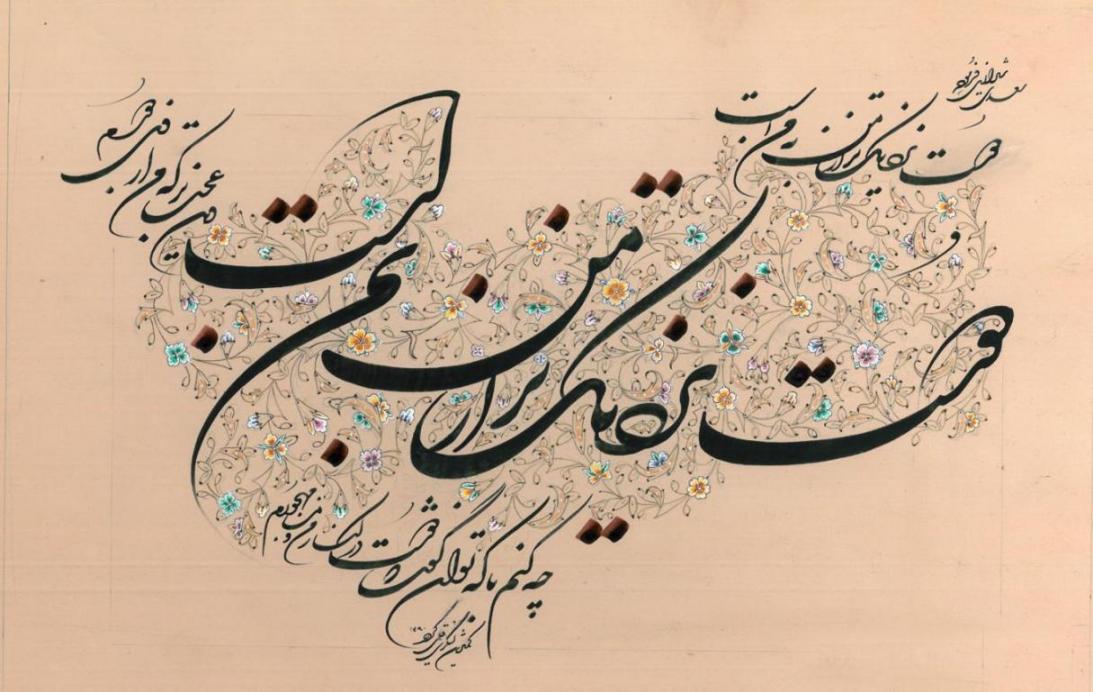Iranians are undisputed masters in Nasta’liq script, said Ali Haider al-Hassani, head of Najaf’s Calligraphers Association.
Al-Hassani, who was in Iran to attend the first Islamic World Thuluth Calligraphy Festival, said he was invited by the Tehran Municipality Cultural Organization and traveled with 3 other Iraqi artists to attend the exhibition. In total, there were 38 artworks from 5 Iraqi artists at the exhibition.
The festival was inaugurated at Imam Ali (AS) Religious Arts Museum in the capital on January 28 and saw works by 50 artists and calligraphers on the subject of the Holy Qur’an and Hadith from Iran, Syria, Turkey, and Iraq on display.
“In the field of Thuluth calligraphy, other Islamic countries are perhaps better than Iran, but we cannot forget the fact that Iranians are the most prominent Nasta’liq calligraphers in the Islamic world,” ISNA quoted him as saying.
Thuluth is a script variety of Islamic calligraphy invented by the Persian Ibn Muqlah Shirazi, which made its first appearance in the 11th century CE (fourth Hijri). The straight angular forms of Kufic were replaced in the new script by curved and oblique lines. In Thuluth, one-third of each letter slopes, from which the name (meaning “a third” in Arabic) comes. It is a large and elegant, cursive script, used in medieval times on mosque decorations. Various calligraphic styles evolved from Thuluth through slight changes of form.
Kufic is the oldest calligraphic form of the various Arabic scripts and consists of a modified form of the old Nabataean script. Kufic developed around the end of the 7th century in Kufa, Iraq, from which it takes its name, and other centers. Until about the 11th century it was the main script used to copy the Qur’an.
Best Tool
The art of calligraphy is very important to the Muslim world. Calligraphy is considered the best tool for writing Qur’anic verses and religious sayings, and even poems of great poets like Hafiz and Saadi.
“Such exhibitions and workshops can have a positive effect on calligraphic art in Islamic countries and I hope it will continue,” he said.
Nasta’liq is a calligraphic script that developed in the 14th century in Iran and remains one of the most expressive forms of aesthetic refinement in Persian culture to this day. Nasta’liq has short verticals with no serifs, and long horizontal strokes. It is written using a piece of trimmed reed with a tip of 5-10 mm (0.20–0.39 in), called “qalam”, and carbon ink “davat”. The nib of a qalam is usually split in the middle to facilitate ink absorption.
Al-Hassani also described Tehran as ‘the city of traffic’ and said “although the city is very beautiful, its traffic is time-consuming; but anyway I love Tehran.”


